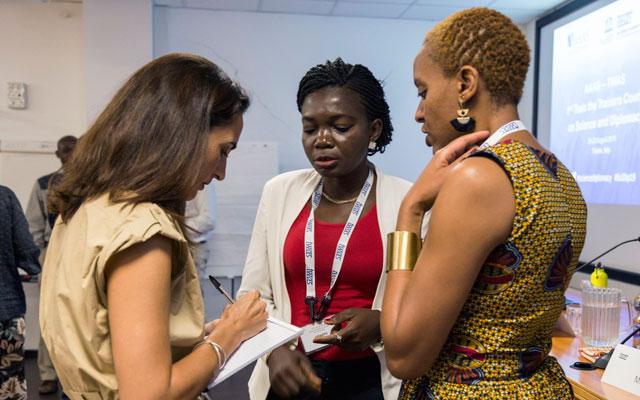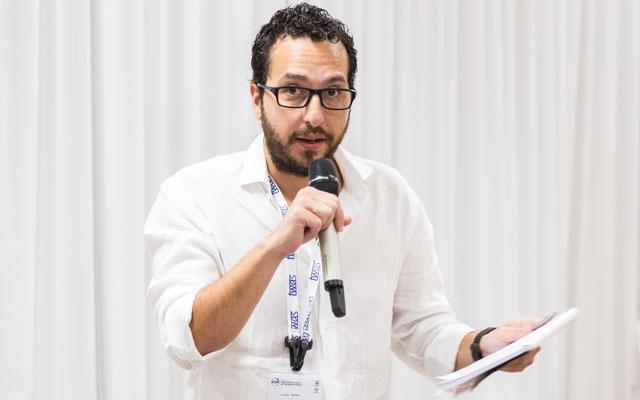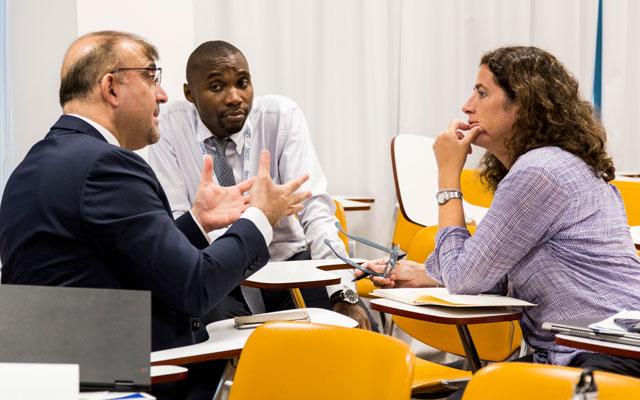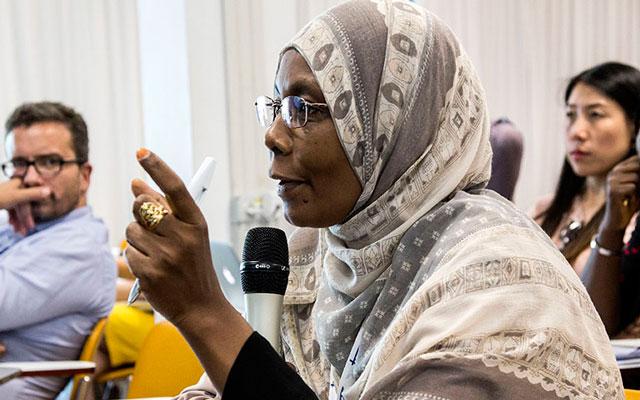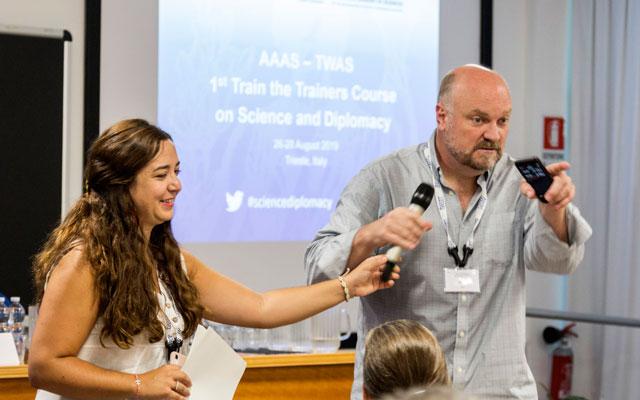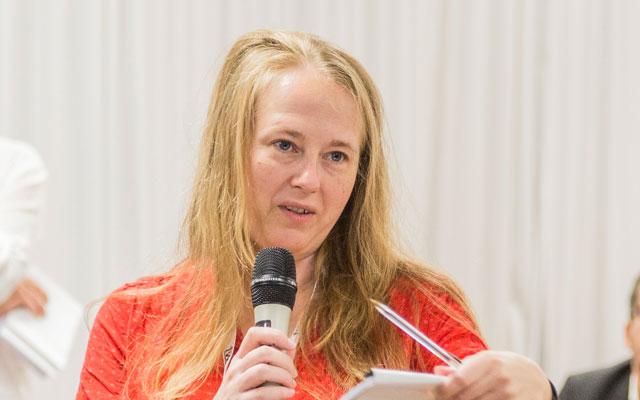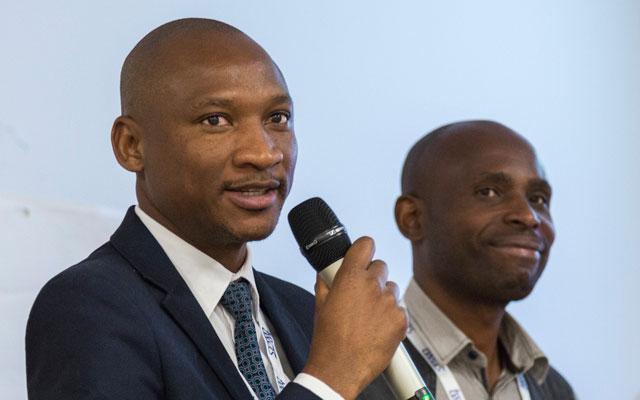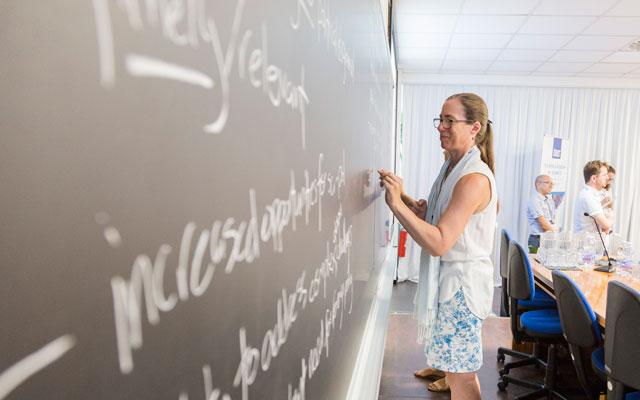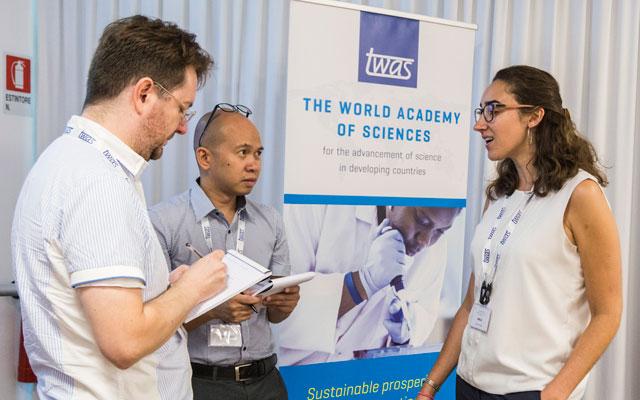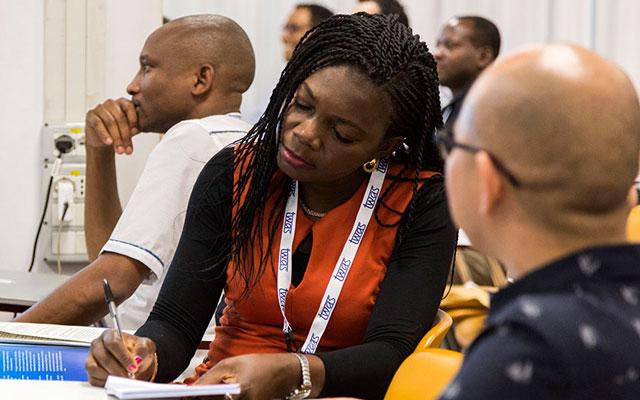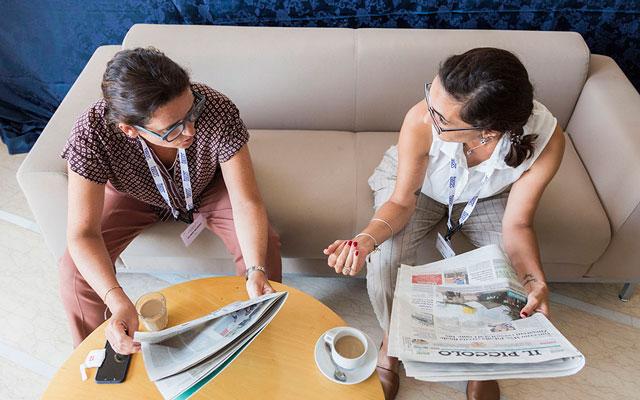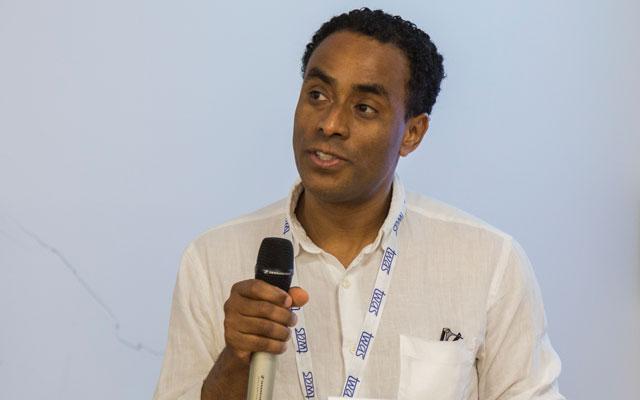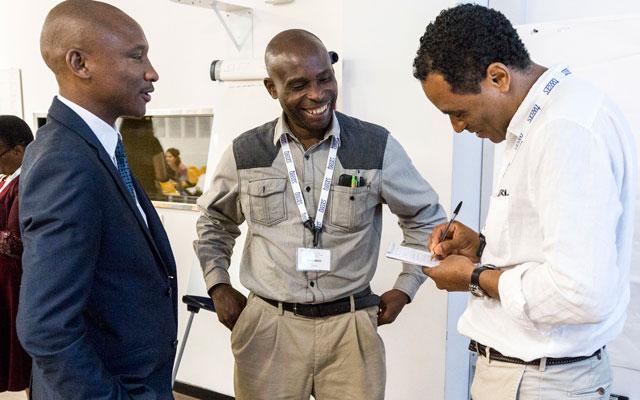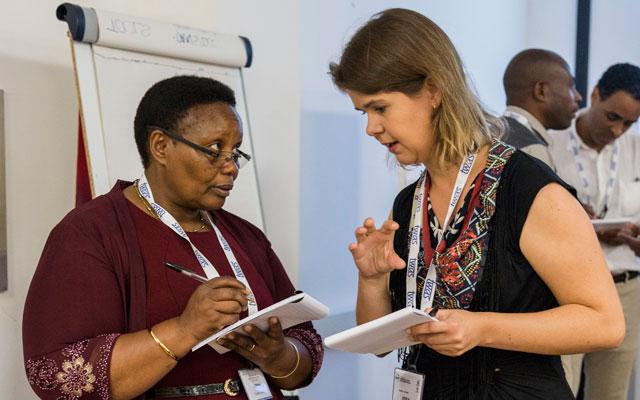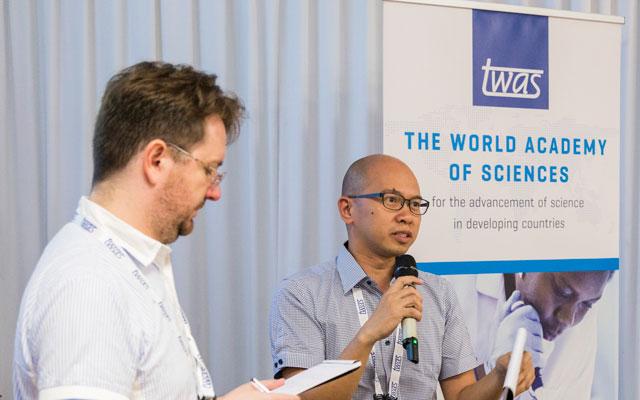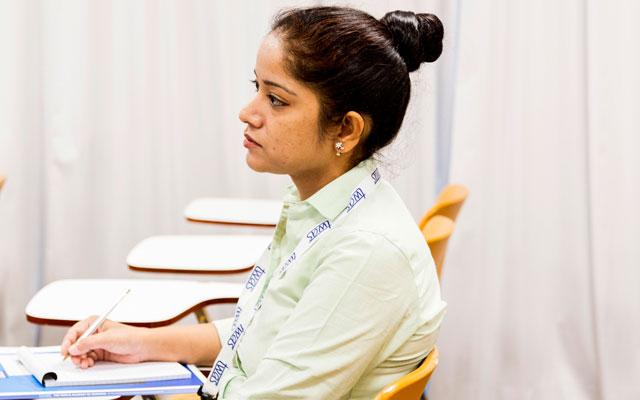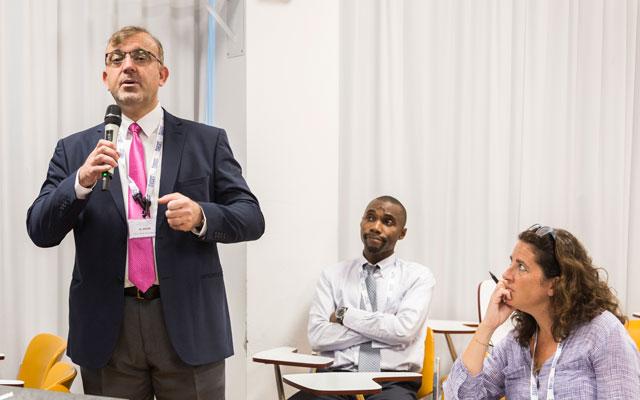
Ice is thawing and permafrost is melting across the Arctic region, and nations are exploring how to tap the new sources of natural resources such as gas and oil reservoirs. But the changes are disrupting the life and culture of indigenous communities throughout the polar region. Long considered distant and desolate, the Arctic suddenly seems a geopolitical flashpoint, and the local communities at risk.
The Arctic is just one of many examples where the future of a population and of a region needs attention at various levels by scientists, diplomats and policymakers. But there is a problem: scientists, diplomats and policymakers often come from different cultures and speak different languages.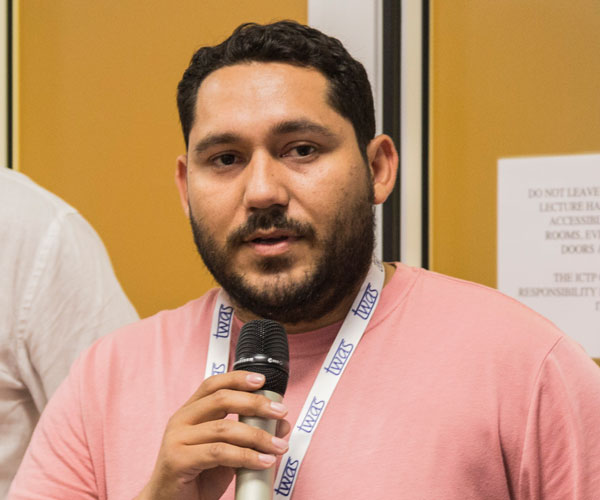
At a recent course organised by the American Association for the Advancement of Science (AAAS) and TWAS, participants were trained in how to organize their own courses and educate future science diplomats in their home countries.
"I have some knowledge in science diplomacy, as my office works on science advice capacity building," explained Oscar Reyes of El Salvador, a science officer for the International Science Council Regional Office for Latin America and the Caribbean. "But I still have a long way to go. So when I heard about this course I thought I should be here. I want to learn the best way to organize an online course on scientific advice. I want to be the go-to person."
The AAAS-TWAS science diplomacy programme is a globally respected initiative in the field of science diplomacy. Starting with the first course in 2014, the annual courses have hosted more than 350 scientists, diplomats and policy experts from more than 70 nations.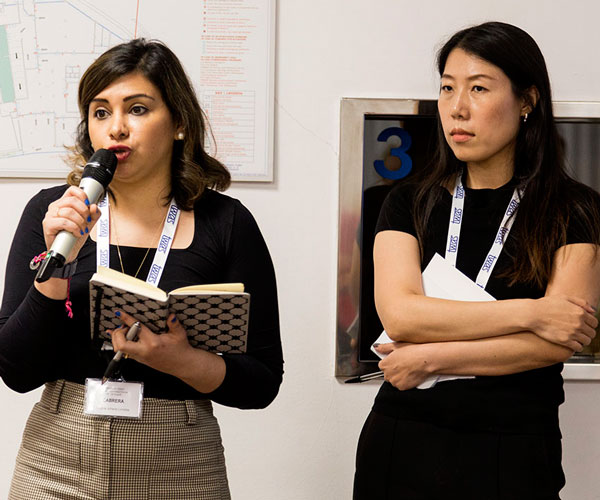
Global challenges, local learning
This year the "Train the Trainers" course, held from 26-28 August, was designed around a new setup, as a natural evolution of past editions. The focus was on training future science diplomacy ambassadors through hands-on activities. The goal was to offer them strategies and tools so that they could return home and, through courses and activities tailored for their home institutions and countries, forge a future class of science diplomats.
"With the explosive growth of science diplomacy courses we felt we needed to offer a new format," explained Peter McGrath, the coordinator of science diplomacy/science policy programme. "Hopefully, this new formula will enable participants to develop their own quality course, locally tailored but inspired by global challenges."
"Science diplomacy works when there are practitioners of it – people who understand the value of international relations, foreign policy, and the scientific process and can apply the combination in their work," said Julia MacKenzie, senior director of international affairs at AAAS in Washington, D.C. 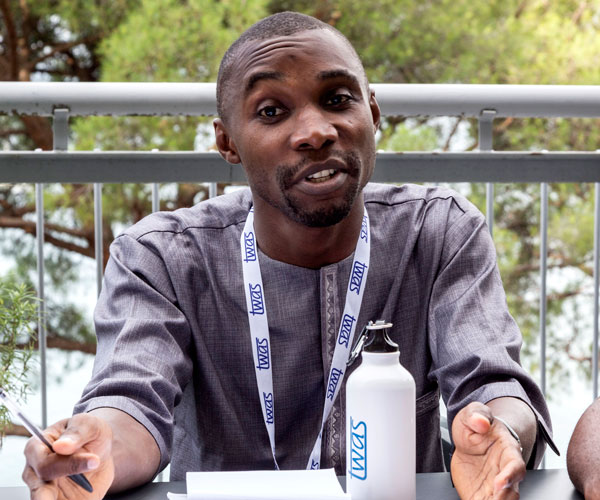
From the beginning, the AAAS-TWAS programme has received financial support from the Swedish International Development Cooperation Agency (Sida), while the current course also was sponsored by the Golden Family Foundation, which has provided sustained support to AAAS.
Over the years the initiative has brought to Italy illustrious experts, and as its visibility and credibility have increased, the TWAS science diplomacy programmes have grown. One new component is the Horizon 2020 S4D4C project (Using Science for/in Diplomacy for Addressing Global Challenges), aiming to support European science diplomacy. New initiatives with the Indian Department of Science and Technology and the Islamic Development Bank also also include science diplomacy.
Thirty participants (52% women) were selected from hundreds of applications demonstrating the growing demand for science diplomacy training around the world. They were from 22 countries in Latin America, Asia, Middle East, Europe and Sub-Saharan Africa.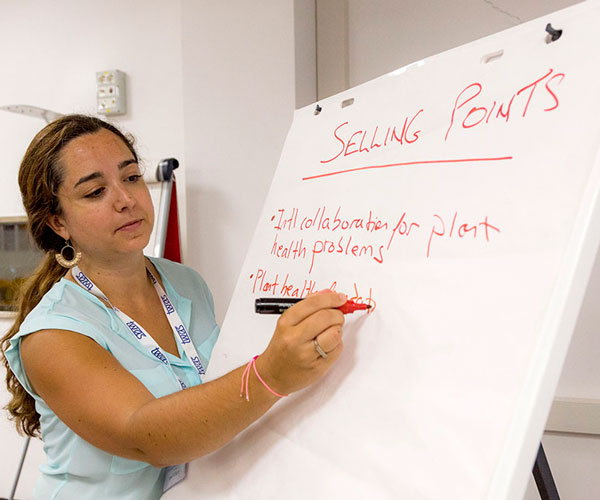
Many were alumni from previous AAAS-TWAS science diplomacy courses, seeking new collaborations and teaching tools to amplify their impact back in their home countries, institutions and communities. Others came to the course for the first time.
Johana Cabrera is a PhD candidate in psychology at the University of Santiago de Chile, but for nine years she was a Honduran diplomat stationed in Chile. "At that time," Cabrera said, "I gained access to training in science diplomacy, and had the chance to write articles on science diplomacy, and to launch actions in this field both in Honduras and Chile. There is great potential with this subject, but more tools are needed."
"Science diplomacy works when there are practitioners of it – people who understand the value of international relations, foreign policy, and the scientific process and can apply the combination in their work." – Julia Mackenzie, AAAS
The course was valuable because it focused on communication and other ways to make connections across disciplines and cultures, said Kebba Omar Jagne, the founder of Making Our Visions and Aspirations Reality (MOVAAR), an educational technology social enterprise start-up based in The Gambia.
"We often partner as consultants with ministries, policy makers and institutions, training audiences who need interdisciplinary skills in communication," Jagne explained. "Learning how to establish a trustworthy relationship is important for the success of our activity."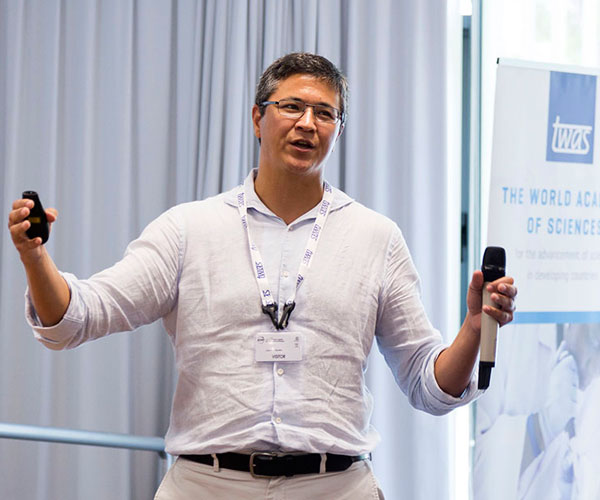
A critical skill: building trust
The course's simulations and role-playing games were devised by Alastair Hay, an illustrious British toxicologist and long-time science diplomat with the Organisation for the Prohibition of Chemical Weapons (OPCW). The course's hands-on approach pushed the participants into leadership roles from the very beginning. They practiced collaboration, negotiation, reciprocity and trust-building.
As it turned out, there is a gap to fill in what scientists should know about diplomacy, and diplomats about science. But also in the language that both parties use, the importance of boundary-spanning skills in communication is often ignored. And in laying the foundation of a course that offers work-tools, it is important to consider that a template structure works well, but that adjustments on local needs and culture are equally necessary.
"Organizing a successful course in India, Panama, South Africa or Brazil requires different approaches," observed Marga Gual Soler, a AAAS Science Diplomacy consultant who has helped to lead the AAAS-TWAS science diplomacy courses since 2015. "This is why we devised an event where participants would not only reinforce what they know, but also acquire new tools and build best practices by sharing their personal knowledge."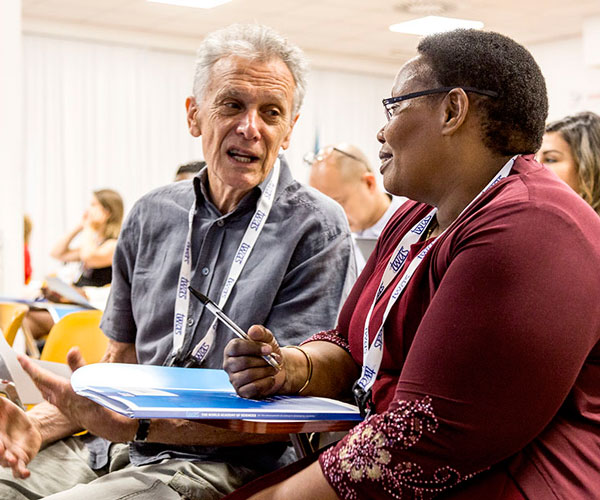
Science diplomacy courses could be as many as there are challenges at the global level. For example: Because it has a worldwide impact, climate change calls for an approach involving various countries. Other targets, such as U.N. Sustainable Development Goals on transboundary conservation or land use, might be addressed between just a couple of countries.
But what would be the ideal target community for a science diplomacy training event? Young diplomats, early-career scientists, policymakers or science advisors to governments? Again, the proposed targets would vary by issue and by urgency.
Putting new knowledge to work
In the final exercise of the course, participants were asked to form working groups and to devise training courses with various formats: from one-day to five-day intensive courses; courses targeted at university teams or diplomats; even an online course. And during the review session, they were asked to brief colleagues.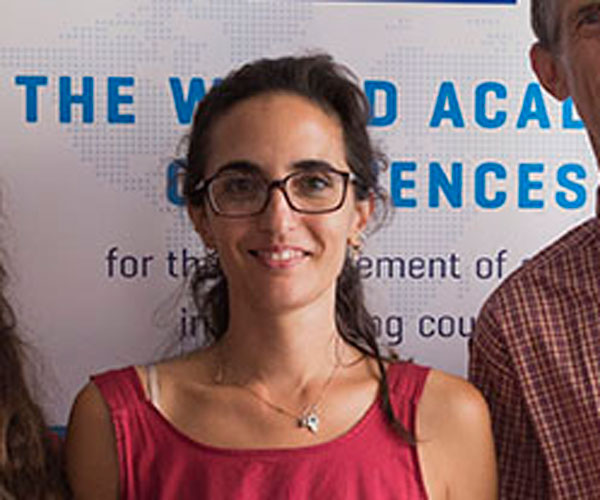
"Our group was made of six people from three distant areas of the world," explained Wei Liu, the director of Division One of the International Cooperation Department at the Chinese Academy of Engineering. "Therefore we devised an intensive full-time course, for a broad audience, aiming at creating awareness on science diplomacy."
Early-career scientists but also students are also an important target, as they are potential future drivers in global policies. "What's important is the quality of interaction with students. We need to know clearly what works well and what doesn't, and what conversations best raises their attention," added Bill Pan, an associate professor of global environmental health at Duke University in the United States.
"I came with great expectations, and I am leaving with much satisfaction, as I go home knowing how to proceed and draft a course with good content," said Elizabeth W. Njenga, an associate professor of botany at the University of Eldoret in Kenya and the vice-chair of the Kenya National Chapter of the Organization for Women in Science for the Developing World (OWSD). "Soon I will speak at an international conference on science diplomacy, and I will be able to tailor my content using the tools I learned here."
Florencia Paoloni, the science and technology secretary at the Italian-Latin American International Organization (IILA), praised the richness of the educational tools she had received: "I have just attended a similar course targeted at diplomats. That course was theoretical and met an important need: offering educational tools framing what diplomats do every day. The AAAS-TWAS course is much more dynamic: I'm leaving here with a bag full of useful suggestions and ideas, which I'm eager to test in a course I plan to set up soon."
Cristina Serra


